This edition can be navigated by using facets to limit the number of cases displayed, by searching for particular keywords or features of cases, or by a combination of these approaches. What’s in this edition? explains the nature of the facets, while this page provides information about our search function. It may not work as you expect.
What is a keyword search?
Our keyword search is powerful, but potentially misleading. Whether you choose to search ‘transcriptions only’, ‘metadata only’, or ‘all’, the results will be limited to what we have coded. They will include variant spellings if the transcriptions are searched, and they will include our classification if the metadata is searched; but they will not include every occurrence of the word in the whole of the casebooks, because we have not transcribed the documents in full. We have transcribed the full ‘question’ section of each case, and also coded the presence of other kinds of information in the entry.
What is the ‘question’ section?
For the astrologers, each consultation notionally began with a series of questions. He asked the name of the patient, the age, and, in cases where the patient is not the ‘querent’, whether he or she has consented to the consultation. Then the ‘querent’ — hence the term — asked what was the cause of the disease or a range of other questions. In this edition, we call all of this information the ‘question’, though the astrologers seldom recorded exactly what the querent asked and thus the ‘question’ section does not necessarily include actual questions.
In practice, while Forman followed this system fairly assiduously, Napier and his associates often departed from it. For the purposes of this edition, the ‘question’ is the passage of text that opens the entry, including concrete details of the patient, the circumstances of the consultation, and usually any explicit question recorded by the practitioner. (See Anatomy of a case.) Where entries contain an astrological chart, the ‘question’ section is typically above the chart, with records of the astrologer’s own thoughts and actions below the chart. Where an entry lacks a chart, or its layout is particularly messy, the editors have exercised judgment in deciding where the ‘question’ ends. All ‘question’ sections have been fully transcribed in this edition. However, a majority of cases include further text that has not been transcribed.
What kind of information do the question sections contain?
These sections typically include the name, age, and habitation of the patient and/or the querent, and the day, date, and time of the consultation. Marital status is often recorded, and sometimes occupation; occasionally someone is identified by noting a relationship to someone else, perhaps a patron or someone better known to the practitioner. Sometimes an entry indicates that the querent is a different person from the patient; if that is the case, it may state the relationship between them, and it may record whether the question is asked with the patient’s knowledge or consent. In addition to these details, the basic circumstances of the consultation are typically recorded: when the consultation took place, and sometimes whether the question was sent or asked in person, and if in person whether the querent came to the practitioner or the practitioner visited the querent. Finally, ‘question’ sections often include a question: sometimes an explicit query noted in full by the practitioner, but often a more formulaic, shortened note, such as the ‘diz’ with which Forman indicated the question ‘what is my disease?’. (More than 90% of Forman’s medical entries include that question.) Sometimes, particularly in Napier’s entries, in place of a question there is a reference to a particular physical problem or group of problems. In a number of cases, there is no explicit question at all.
What kind of information usually appears below the question?
Below the ‘question’, the astrologers typically drew an astrological chart and recorded a judgment. The judgments are sometimes very brief or uninformative, and sometimes include rich details, either in lists of words or phrases or full sentences, about the patient’s symptoms, history of illnesses, accounts of other problems (both physical and social) that might be causing or exacerbating matters, the treatments recommended for them, payments, and sometimes indications of the outcome. We encourage you to try reading them, with the help of our guide to the handwriting. For every entry we have recorded what types of information are present: whether there is a judgment, for instance, or whether there are treatment notes, financial details, or a record of having consulted with angels. The ‘Consultation details’ facet on the ‘Browse’ and ‘Search results’ pages allows you to pick out the entries including particular features, and the features themselves are listed and explained on our page What’s in this edition.
For information about the astrological chart and other astrological notes, see our guide to the charts and Forman’s own discussion of medical astrology. However in most cases it is not possible to establish the full significance of the astrological material, and since symptoms discussed in the judgments may be recorded because the practitioner has seen them in the chart, rather than necessarily (or solely) because the patient has experienced them, great care must be taken when interpreting the judgments’ medical details.
Why are only the question sections of each case searchable?
We have focused on indicating, so far as possible, what the querents’ questions and concerns were. These are best reflected in the contents of the question section.
The judgments (which we have not transcribed) are the practitioners’ views of these cases. They are not at all straightforward: in the production of a judgment a practitioner might refer to what problems, causes, and parts of the body the astrological chart pointed to; he might examine the patient’s urine; guided by the chart and urine and by his own knowledge and experience, he might ask targeted questions about other particular problems, of the body or of the mind, suffered by the patient; the querent (or messenger) might put forward further details not raised in the original question. The judgment is a complex document that was the outcome of a process of discussion and exchange directed by the practitioner and with several potential sources of information. Even if we could be certain of the veracity of all the medical details the judgments contain, they almost certainly include things that were not part of the original question, and that the querents and patients would not have associated with their original problem. Broadly speaking, the question section typically presents information about the patient and the encounter (albeit filtered through the practitioner’s standardising techniques of recording), but the judgment section presents the views of the practitioner.
For us to record topics for the judgments as well as the questions, or to make each case fully searchable, would be a different task and fell outside the scope of this edition.
There is one important caveat to all this: the contents of the judgment are typically not transcribed or recorded in detail, but where there is no explicit question at all in the ‘question’ section of an entry, we have used the judgment to establish a broad category. We may not be able to rely consistently on the medical content of judgments to determine what querents asked, but a medical judgment does imply a medical question of some sort, and a judgment about marriage implies a question about marriage. Accordingly, the topics used for entries with no explicit question are broadly informed by the contents of their judgments or other untranscribed details.
Why are both topics-based (through facets) and free text (through keywords) searching available?
Topics identify recurrent concepts or entities in the casebooks that may be referred to in variable ways that would be difficult to find by a keyword search of the transcriptions alone. For example, the ‘marriage’ topic will find all cases in which the question section refers to marriage in any way, even if the word ‘marriage’ itself does not appear. The ‘epilepsy’ topic will include all cases in which the question section refers to epilepsy by one of its other names in this period, such as falling sickness or comitial disease.
What limitations does this impose on the search function?
It means that you are searching the brief or formulaic questions, rather than the full details as presented in the judgments. This limitation is particularly important for understanding the nature of the topics in this edition and the fluid nature of diseases categories mentioned in the casebooks. A search for melancholy, for example, will not identify all cases in which melancholy is mentioned, but only those in which melancholy is mentioned in the question. It will not return an entry in which the question refers to a stomach problem, and the practitioner adds the detail in the judgment that the patient has become very melancholy; nor will it return an entry in which no question is recorded but the judgment discusses melancholy at length — that entry would be coded as having a general passions question. Searching like this is a good way to find qualitative material about melancholy, but extreme care should be taken about any quantitative conclusions drawn. Even where a search may present what appears to be a significant number of cases, further work is needed to determine whether the topic was mentioned by the practitioner, the patient, or a third party. For instance, while many women asked the astrologers whether they were pregnant, and while the astrologers often considered — in the judgments — whether a woman was pregnant, these are very different kinds of information. Moreover, while the former represents how many women thought they might be pregnant, and the latter represents the tendency for early modern medical practitioners to associate women’s health with their generative status, neither figure tells us how many women were in fact pregnant.
Are there any exceptions?
Yes. Occasionally a judgment mentions that something is feared or suspected by the patient, or includes an explicit question out of place. In these instances, a high proportion of which involve witchcraft or pregnancy, these supplementary questions or worries are recorded in the entry’s topics, since they are explicitly part of what the querent asked the practitioner. They will therefore typically be accessible by searching topics, or by a keyword search of the metadata, but not through a text search or a keyword search of the transcriptions alone.


